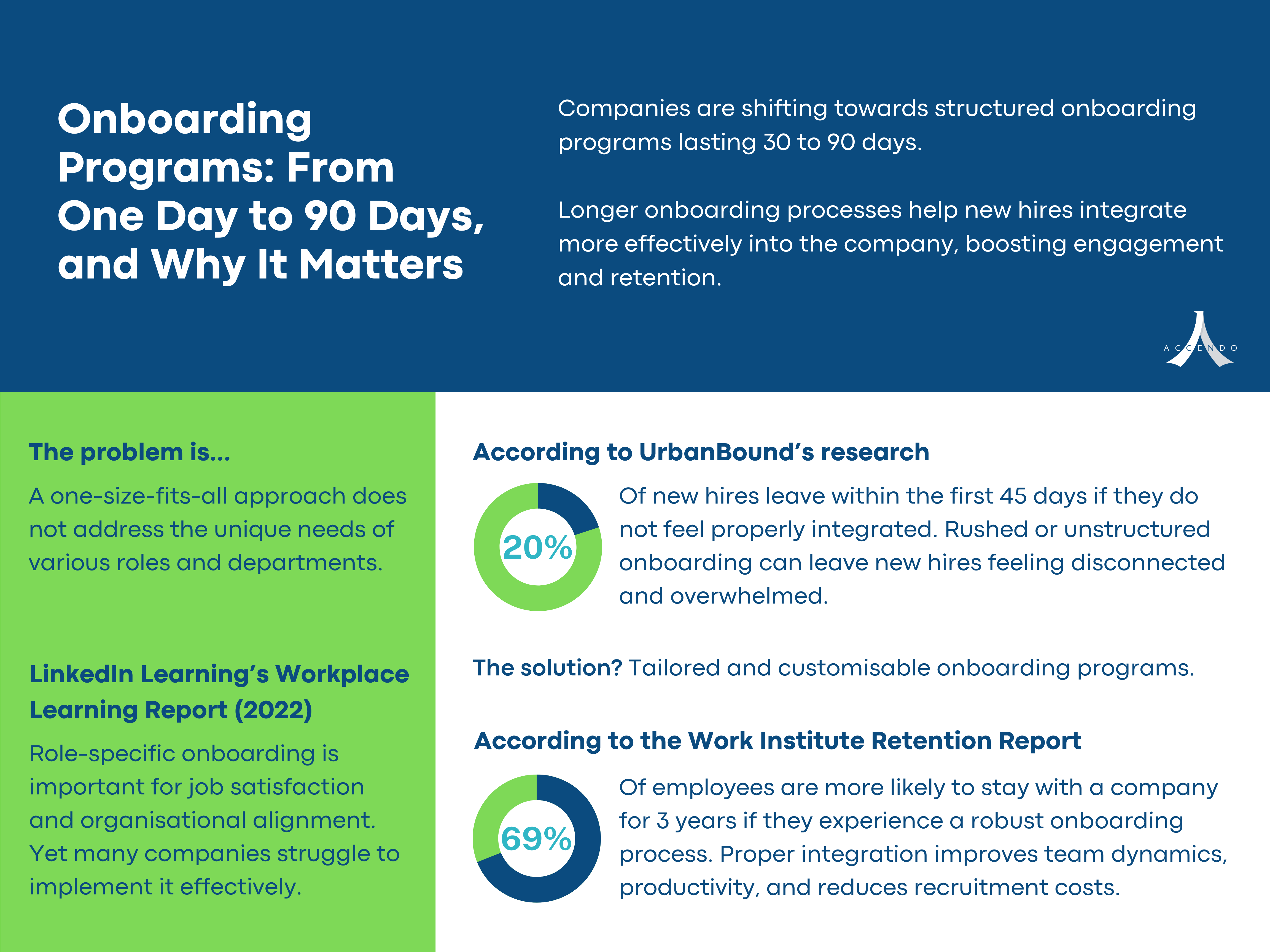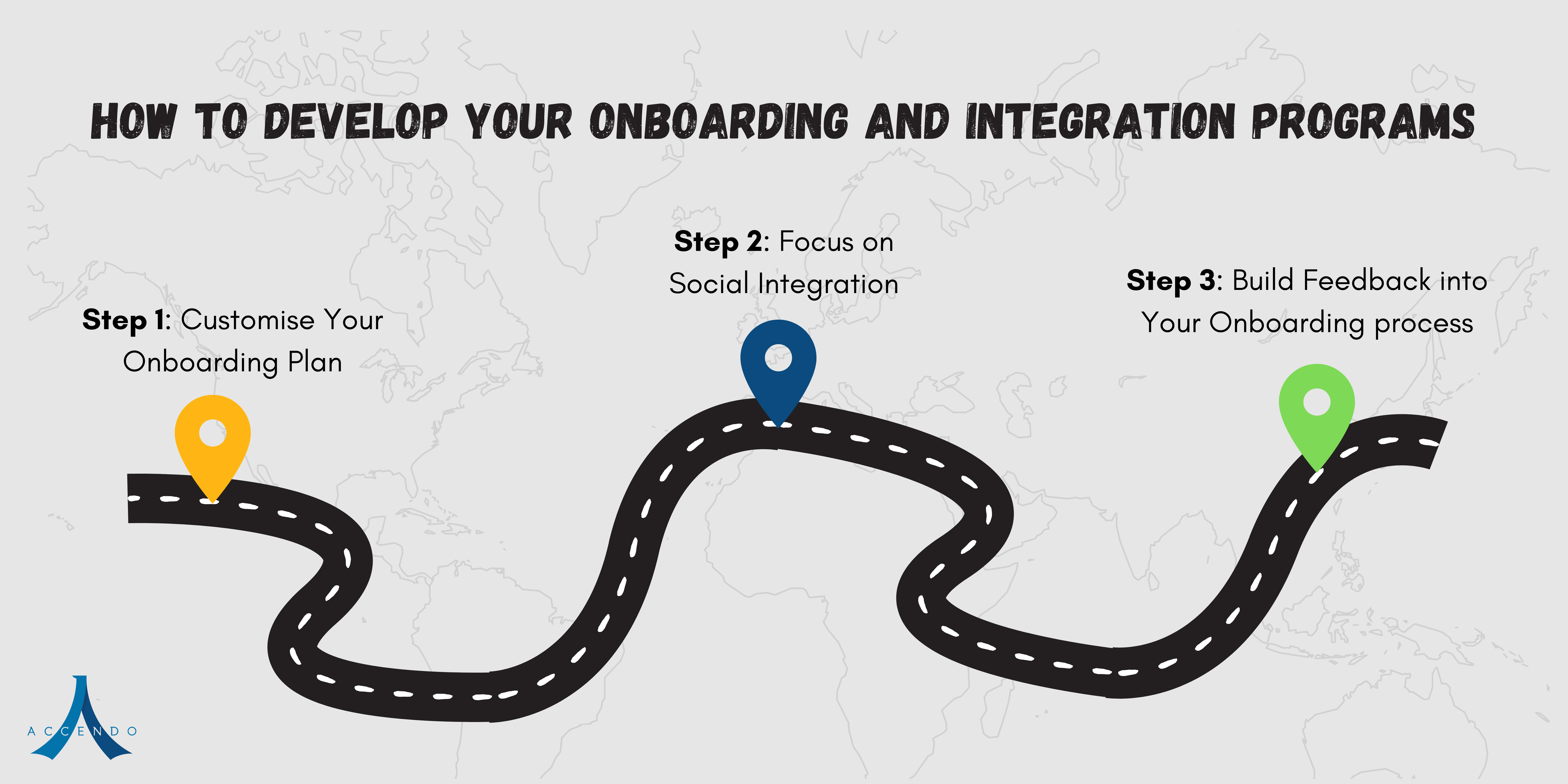A new employee joins your company, but despite their qualifications, they struggle to adapt to your organisation’s culture and processes. What went wrong? Our article explores the critical stages of employee onboarding and integration and why it is essential for you to build a structured approach to welcoming and guiding new hires. We will discuss common pitfalls you could face during this process and provide actionable strategies to improve your onboarding and ensure smoother integration.
Why Onboarding Matters More Than Ever
Onboarding is your company’s first impression – a chance to lay the groundwork for long-term success. Research shows that companies with strong onboarding programs retain new hires longer and see faster productivity.

Conversely, poor onboarding experience can lead to quick turnover. These statistics paint a clear picture: Onboarding is a critical investment in talent retention and development.
The Common Pitfalls of Onboarding
Despite its importance, many organisations struggle to implement effective onboarding strategies. A few common challenges tend to disrupt the onboarding process.
A one-size-fits-all onboarding plan may overlook the specific needs of different roles or departments. This can result in poor job-role alignment and dissatisfaction, with employees feeling disconnected from their job’s actual requirements.
Onboarding should be standardised across the organisation, yet many do not follow this rule. When different teams onboard their new hires in various ways, employees may end up receiving unequal levels of support. This can lead to further confusion and eventually, frustration.
The relational aspect of onboarding is often undervalued. New hires who struggle to form early connections with their colleagues may feel isolated. According to the Harvard Business Review, social integration during onboarding can significantly reduce turnover rates and boost job satisfaction.
Best Practices to Developing an Effective Employee Onboarding and Integration Program

Step 1: Designing a Custom Role-Specific Onboarding Plan
Different departments and roles come with their own set of challenges, requirements, and learning curves. Therefore, onboarding needs to be a collaborative effort between HR teams and department heads to ensure that the process is aligned with the responsibilities and the expectations of each role.
Actionable Tips
- Break down the onboarding content by role, ensuring that technical skills, job duties, and team dynamics are covered.
- Allow managers the flexibility to tweak the onboarding for their teams, while maintaining core organisational standards.
- Include milestones for new hires to hit at the 30, 60, and 90-day marks, making the process feel manageable and purposeful.
Step 2: Focusing on Social Integration
New hires need to feel like they belong, and this starts with forming early relationships. Structured social programs, like mentorship and buddy systems, can help new employees navigate both the formal and informal aspects of the workplace culture.
Encouraging new hires to build relationships with colleagues increases their likelihood of feeling supported, included, and aligned with your organisational goals.
Actionable Tips
- Pair new hires with a mentor or a buddy to help them acclimate.
- Organise informal social gatherings or virtual coffee chats (for remote teams).
- Encourage team leaders to facilitate introductions and ongoing relationship-building activities.
Step 3: Building Feedback into the Onboarding Process
Feedback is crucial to understanding the effectiveness of your onboarding program. Set up regular check-ins at key intervals – 30, 60, and 90 days – to gauge how well your new hire is doing and whether additional support is needed.
This can also be seen as an opportunity for the new hire to provide feedback on the onboarding process itself, allowing you to make iterative improvements.
Actionable Tips
- Schedule formal feedback sessions to evaluate how the onboarding process is helping employees integrate.
- Use employee feedback to identify gaps or challenges in the current process.
- Adjust the onboarding program as needed to address recurring issues or areas of improvement.
Conclusion
Effective employee onboarding and integration are key to fostering a productive, engaged workforce. By customising your onboarding program, emphasising social integration, and building a feedback loop, you’ll create a smooth, welcoming experience that sets new hires up for long-term success. Investing in onboarding is not just about reducing turnover; it’s about creating a culture of support, growth, and continuous improvement.
Page Contents






